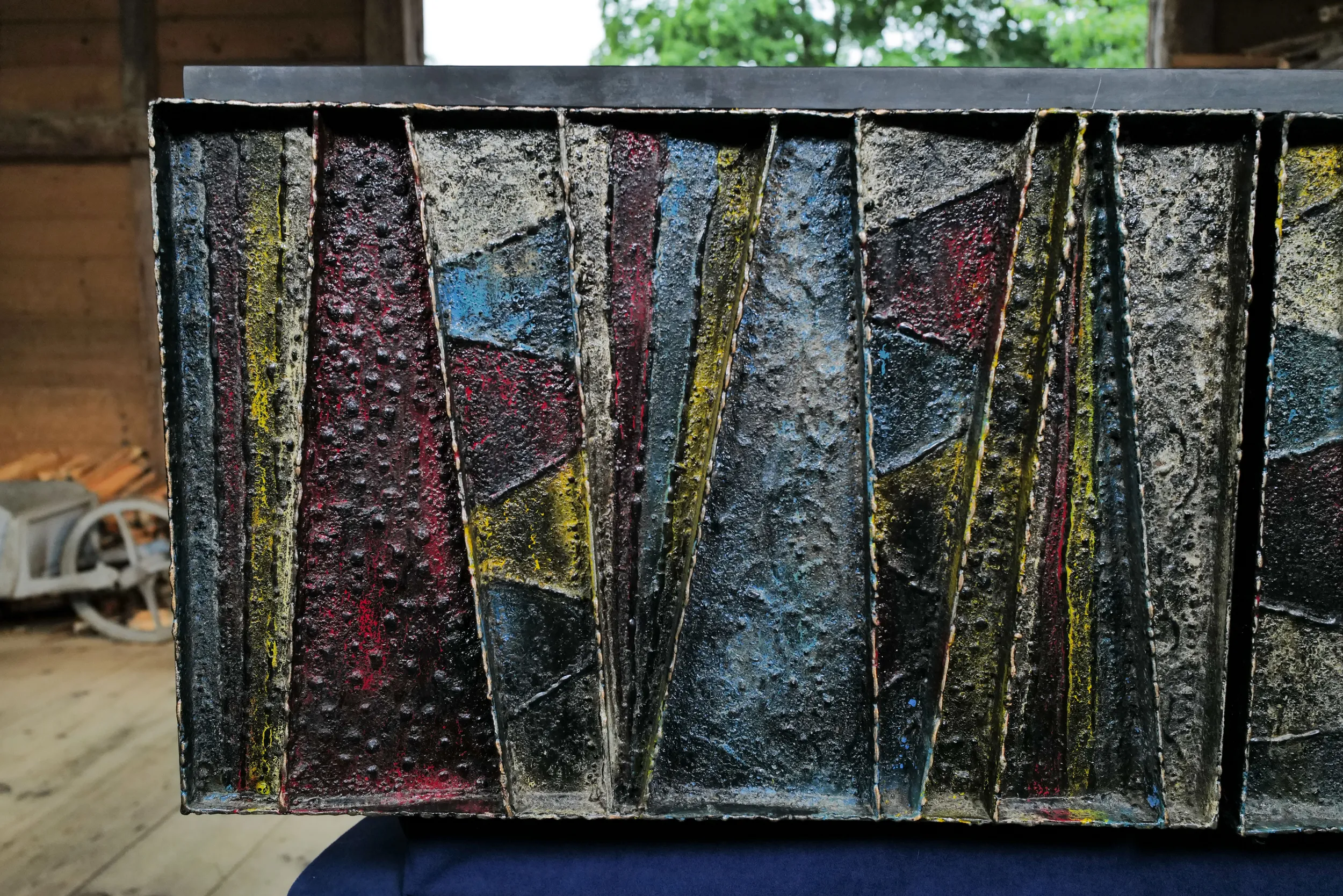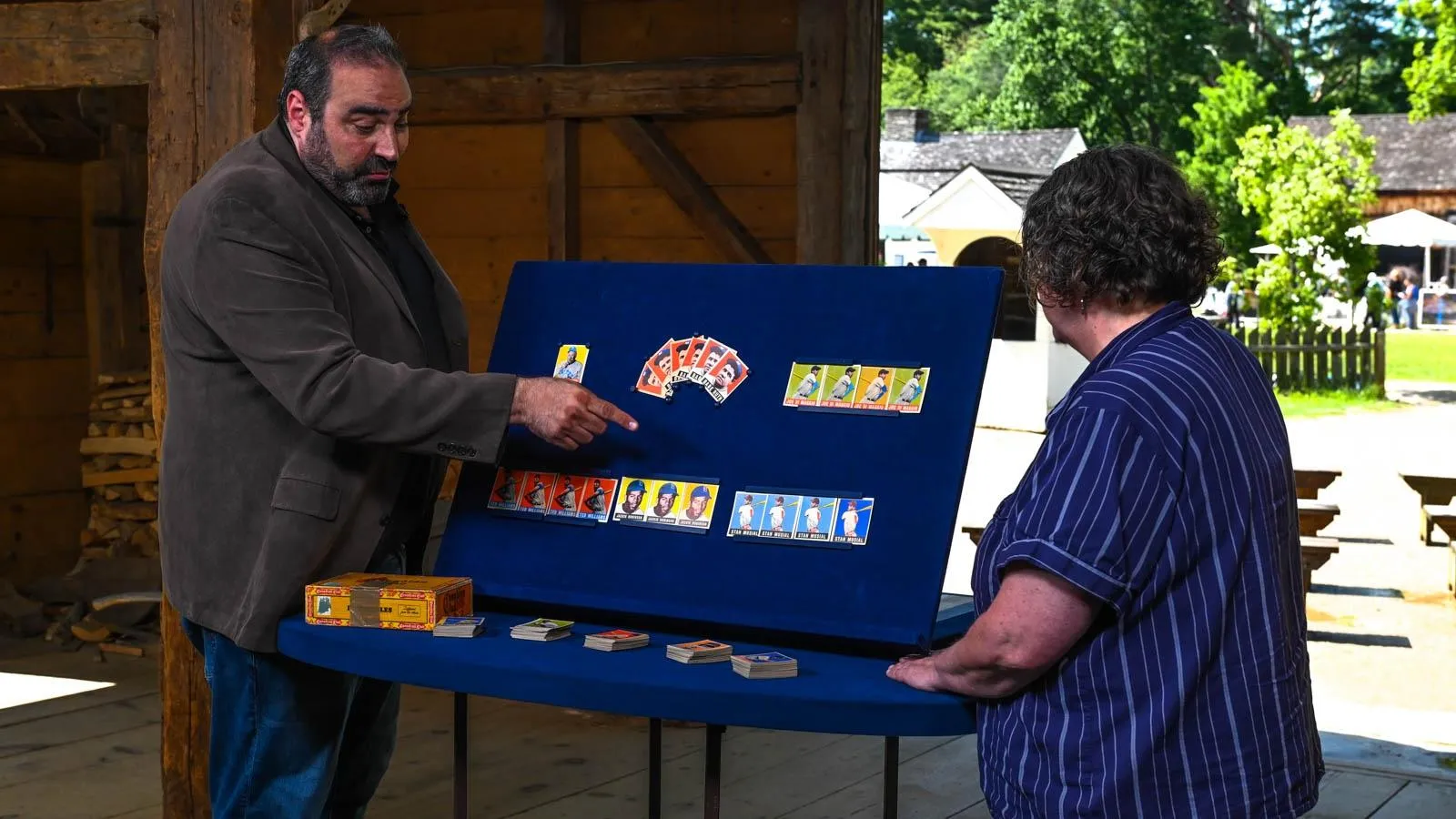GUEST: It was purchased by my parents back in the very early 1960s. They purchased it as, um, an art object and a piece of furniture.
APPRAISER: Mm-hmm.
GUEST: They lived in an apartment in New York City, and it hung literally bolted to the wall. It has no stand for years.
APPRAISER: Mm-hmm. Was there ever any conversation about what they paid for it?
GUEST: I wish I knew.
APPRAISER: This is a credenza, or a, a buffet or a sideboard. It's meant to hang against a wall. And it was designed and fabricated by Paul Evans. Although he made furniture, I think this is, if it's anything, it's a piece of sculpture. And what's lovely about it also is that all of its color is very vibrant. So, Paul Evans was schooled in some of the finest craft schools in America, and then finally at Cranbrook, out in Michigan, which is where many of the great, uh, craftspeople, uh, studied in mid-20th century.
GUEST: So he actually studied.
APPRAISER: Yes, he did.
GUEST: Uh-huh.
APPRAISER: Yes, he, and... But at Cr, he left Cranbrook. And do you know where he came after Cranbrook?
GUEST: I would have thought New York City, but...
APPRAISER: He came to Sturbridge Village.
GUEST: You're kidding!
APPRAISER: (laughs): No, no.
GUEST: How appropriate.
APPRAISER: (chuckling) I know.
APPRAISER: So, here we are back at Sturbridge Village. So, this is, um, in the early '60s. You had mentioned that your parents probably bought this in the early '60s, but in fact, we know it's signed under the base. It says "Paul Evans," and it also says "68." So, it was probably made in '68. He fabricated this. This is, uh, known as a deep relief design. You can see this red, great red, uh, interior.
GUEST: Yes.
APPRAISER: They came in, in the same sort of colors here. There were blue interiors, also greens. The whole thing was fabricated in these workshops. They were working in New Hope, Pennsylvania. At the height of Paul Evans', uh, manufactury, he had over 80 people, uh, working for him. But this is a one-off, unique piece. He worked into the '80s and sadly, died very young, at, at 55 years old in, uh, 1987.
GUEST: Oh.
APPRAISER: In, in his vacation home in Nantucket. Any sense of the value of this?
GUEST: I only recently found out that it was a "Paul Evans."
APPRAISER: Mm-hmm.
GUEST: I assumed it was more valuable than I thought it was. (chuckles)
APPRAISER: Right.
GUEST: So, I have no idea what it would be worth now.
APPRAISER: Right. Well, we would put an auction estimate on this at, in the $25,000 to $35,000 range.
GUEST: Uh-huh.
APPRAISER: So, it is a, a pretty, uh, you know, wonderful, hefty...
GUEST: Uh-huh.
APPRAISER: ...uh, price. And I'm guessing your parents didn't pay anywhere near that.
GUEST: No, don't forget, too, it was the '60s, so... (chuckles) And I have to say, I'm really proud of my parents. They were just ordinary people who had this kind of taste and appreciated the...
APPRAISER: Right, right.
GUEST: ...this art, 'cause they loved it, I know.
APPRAISER: It, I mean, it's the definition of the avant-garde, right?
GUEST: (laughs) My parents as the avant-garde. It's great to think about that.
(both laughing)
APPRAISER: It's funky, right? I mean, you can really see...
GUEST: Mm-hmm.
APPRAISER: ...all these welding marks on it. He wanted to show the handwork.












